Transat Jacques Vabre: Doldrums for Class 40, and opportunity
Published on November 20th, 2013
(November 20, 2013) – A notable compression of the fleet is under way in the Transat Jacques Vabre’s Class 40 fleet and now nine boats at the top are expected to squeeze up as they get into the Doldrums.
Leaders Sébastien Rogues and Fabien Delahaye are not expected to have it easy as they get into the difficult, changeable conditions. Mare, sailed by Jorg Riechers and Pierre Brasseur, are only about three hours behind while the Spanish duo Alex Pella and Pablo Santurde on Tales Santander 2014 are only another 10 hours or so behind them. They have been very quick since the Canary Islands, as have the Austrians Christof Petter and Andreas Hannakamp on Vaquita who are now up in fourth. But largely it should still be a first in-first out situation, emerging into the SE’ly trade winds.
And off the Brazilian coast Actual (Le Blévec and de Pavant) have made a strategic move in second place to try and compensate for a lost spinnaker, moving towards the shore and presently sailing some five or so miles off the beaches, trying to find a little more wind pressure. For the moment it does not seem to be reaping them much of a dividend, but there has been a gybe by the leaders FenêtréA Cardinal (Le Roux – Elies), 50 miles ahead, just to keep a cover on their pursuers. Their winds are more in the NE now and so the leaders have just chosen to keep their only real rivals ain check.
And there is some risk for them. On the approach to Cabo Frio, at the entrance to the Bay of Rio there is a depression lurking, a stormy frontal system which will get to the two leading multihulls on Thursday afternoon. These systems are just at the very early stages of their generation and so are very difficult to understand and predict, so will the two Multi 50s follow the same strategy?
Meantime in Madeira it had taken seven days for the upturned Arkema-Region Aquitaine to reach the port of Canical in the east of Madeira after being towed by the Portuguese tug WEST at an average of something around three knots. They arrived during the night of Tuesday November 19th after their tow of 260 miles.
And then on Wednesday afternoon Arkema-Region Aquitaine was turned back upright by using a big crane, after which skipper Lalou Roucayrol reported that the Multi 50 is in good condition structurally:
“We have got to land nine days after we capsized and will never forget this experience, including the tow! It was long and it was complicated to tow the boat this far and so we are very lucky to now find that structurally it is intact. I think that we made the right decision to come to Madeira and not to go to Lisbon as it was downwind as opposed to upwind. And the week on the tug will always be a memory. In the end we had 14 on board a tug made for a crew of six, Russians, Dutch, Filipino, it was a nice melting pot and we passed the time as we could. Now really the second phase begins and we are in a brand new marina here with all that we need to clean up the boat and then we will make a decision how and when to repatriate the boat to France.”
Just over 500 miles behind them the first IMOCA Open 60s follow almost the same route as the trimarans all the way since the Doldrums. For the leaders there is an air of groundhog day, “same conditions as yesterday and the day before and tomorrow’ was Safran’s Marc Guillemot’s description. Racing the long straight line requires concentration and application to gain any small miles. Francois Gabart and Michel Desjoyeaux still hold their lead on MACIF at around 20 miles on PRB (Riou and Le Cam)
The first first five IMOCA monohulls will face the stormy frontal system on Friday night at Cabo Frio and it will give them quite a testing time off Rio.
They said:
Marc Guillemot, skipper of Safran :
“We have the same conditions as yesterday , as the day before yesterday and no doubt we will have the same tomorrow. There is nothing much exciting, there is not really a strategy. But nonetheless we continue to try and pick up a few miles here and there. This is not the kind of sailing which is extreme, but it is miles that must be done. The Brazilian coast is not easy. There is debris in the water left by fisherman, nets, big dead fish and so we are always on the lookout. In these conditions we steer a lot, much more than on pilot. We have someone on deck all the time to trim and steer. Conditions will be calmer for the approach to Cabo Frio and then onwards to Itajai. The ETA for us is November 26th at 1115hrs exactly”.
Vincent Riou, skipper of PRB :
“There is really not much in the way of strategy at this moment, all along the Brazilian coast the seas are a bit chaotic and so the pilot does some of the work and it helps keep the boat going as fast as possible, us just trimming for maximum speed. The pilot works well and we trim to it. We are far enough offshore so that we dont meet or see that many people. And the seas are nearly 4000 metres deep here so there are not many fishermen about. That is a little advantage of being a bit further offshore, not having to watch out for traffic as much.
Tomorrow morning the wind will ease and lift us a bit but it wont really change that much. But within the next 48 hours there will be a small front to negotiate. But the final phase does look difficult.
We get the impression of not seeing the sun because the boat is always under water but we cant complain because we are mostly going pretty fast. We plan to arrive on Sunday morning”.
Pierre Brasseur, co -skipper of Mare :
“We are getting closer to the Doldrums and it feels just like that as the skies are getting darker, it is squally, its humid and i trains. Tales is stuck to us but we are getting back at GDF SUEZ and so we are compressing a bit. We have been on the helm for 24 hours solid since Cape Verde and that is tiring but it is paying off for us. From the start in this race we know that you need to preserve the boat and the sails”.
Halvard Mabire, skipper of Campagne de France:
“We blew our spinnaker and we are missing it. Without it we are a bit compromised. It is not really for repairing but we will see when the conditions improve a bit. We have had reasonable conditions, between 24 and 27 knots and the boat goes well in this. The spinnaker tear is a bit unexplained”.
See latest postions for the fleets:
http://www.transat-jacques-vabre.com/fr/classement
Follow the race:
Internet
Live tracking updated every 30 minutes.
Race Tracker URL: http://tracking.transat-
Positions will be updated every 3 hours: 0400hrs / 0700hrs / 1000hrs / 1300hrs / 1600hrs / 1900hrs GMT
Social Media
Live updates through the start and through the race itself on the official facebook pages and on the twitter feed (@TransatJV).
And the Transat Jacques Vabre Application is now available on iPhone and Android and includes tracking facility.
VIDEO
Video footage will be available to registered broadcasters for download on the TV server:
www.transatjacquesvabre2013.tv
For any queries please contact:
Hélène Tzara – helene.tzara@tjv2013.org – +33 (0)6 10 18 80 90


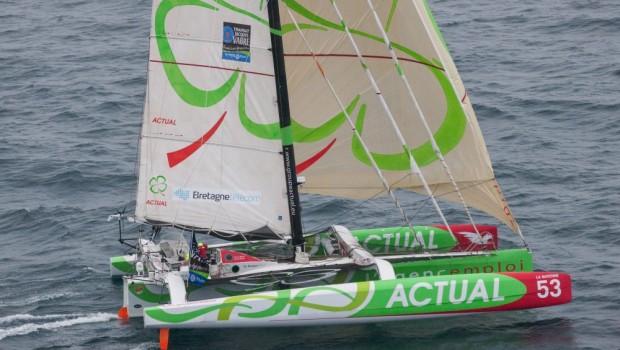


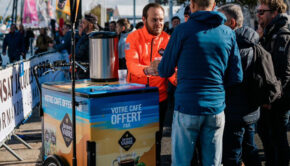
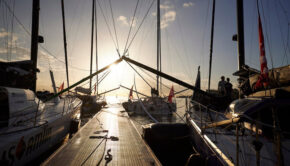
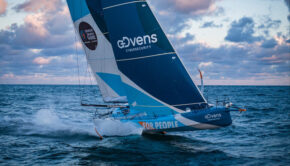
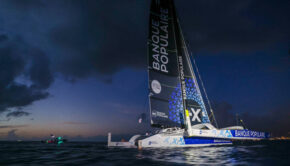
 We’ll keep your information safe.
We’ll keep your information safe.